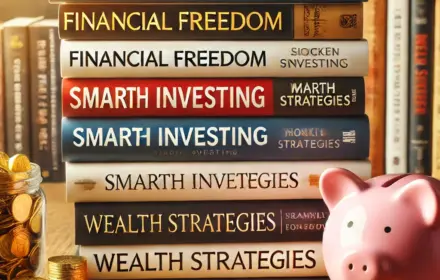The question of financial stability after the end of one’s working life is more relevant than ever. Dependence on a single source, limited payments, and the rising cost of living force people to seek solutions in advance. Passive income in retirement allows maintaining the accustomed standard of living, reducing dependence on social benefits, and providing freedom in decision-making. Such a source of income does not require constant involvement, is formed in advance, and becomes a support for a comfortable future.
Why Passive Income in Retirement Is Needed: Arguments in Favor of Preparation
The funds provided by the state system often do not even cover basic needs. In conditions of inflation, price increases, and unstable economic cycles, one pension payment is not enough. Passive income for retirement is not a luxury but a financial cushion.

It is important to understand that creating such a system cannot be done in one day. Building capital requires strategy, discipline, and resilience to risks. The earlier the journey begins, the more resources can be accumulated, making the capital more reliable.
How to Create Passive Income for Retirement: Key Principles
The path to financial independence in old age is built on several basic principles. Below are the key steps to start moving towards the goal:
- setting a specific amount of monthly automated earnings;
- calculating accumulation periods considering inflation;
- selecting reliable instruments: stocks, bonds, real estate, currency, business;
- forming a portfolio considering risk level and desired profitability;
- regular replenishment and asset rebalancing.
Financial literacy and discipline are the key to turning cash flow into reality, not just theory.
Real Estate as a Tool for Investment Income
One of the most common ways to ensure passive income in retirement is through real estate investment. Residential or commercial property rented out can provide stable monthly revenue. The main advantage is the regularity and predictability of the cash flow.
To profit, it is important to consider the region, liquidity of the property, level of competition, and maintenance costs. With proper management, real estate can not only preserve capital but also increase it through market value growth.
Risks are associated with downtime, repairs, rental discipline, and market changes, but diversifying across different types of properties can mitigate them.
Securities: Stocks, Bonds, Funds
Investing in the stock market allows for passive income in retirement through dividends, coupons, and capital appreciation. Company stocks bring profits from earnings, while bonds provide a fixed percentage of the invested capital.
When selecting assets, it is important to assess the risk level, investment term, and issuer’s stability. A long-term approach helps smooth market fluctuations and receive a regular cash flow without active participation.
For novice investors, ETFs (exchange-traded funds) are suitable, providing access to diversified portfolios even with a small initial capital. This simplifies market entry and reduces the burden of asset management.
Currency and Precious Metals as Protective Assets
For those aiming to reduce currency and inflation risks, protective assets are suitable. Storing part of the savings in dollars, euros, yuan, or other stable currencies helps preserve the capital’s purchasing power.
Precious metals—gold, silver, platinum—do not provide regular monetization but serve as a stability element and insurance against macroeconomic shocks. Their share in the portfolio should not be primary, but as part of the structure, it enhances resilience to external threats.
Business Participation as a Form of Long-Term Investment
Financial participation in an operating business is another way to create passive income for retirement. This could involve investing in an existing project, franchise, or through crowdfunding platforms.
The main condition is understanding the model, transparency, and having a legally formalized agreement. A business can bring dividends or a percentage of turnover. Cash flow is not always stable, but with a successful project choice, it can outperform the returns of traditional instruments.
What Mistakes Hinder Forming Regular Income?
Many make miscalculations that undermine even the most ambitious plans. Below are the most common mistakes:
- delaying the start of savings;
- lack of strategy and replenishment system;
- concentration of capital in one asset;
- ignoring inflation and fees;
- attempting to get rich quickly through aggressive investments;
- refusal of consultations from specialists.
Avoiding failures is aided by a comprehensive approach, regular analytics, and a cool head when making investment decisions.
How to Save for Retirement Without Harsh Economy?
Financial independence does not require giving up comfort. Below are approaches that allow forming retirement savings through investments without pressure and stress: Practical methods:
- monthly automatic transfer of part of the income to an investment account;
- increasing savings amount with salary growth;
- participation in corporate pension programs;
- using tax deductions for investment accounts or pension funds;
- expense control and reasonable savings without fanaticism.
This approach maintains a balance between the current standard of living and future stability, making saving a habit rather than an obligation.
Portfolio Strategy and the Role of an Expert
Creating an investment portfolio requires understanding the balance between profitability, risk, term, and liquidity. Proper asset allocation among stocks, bonds, real estate, currencies, and funds allows for a stable and manageable passive income in retirement.
The assistance of a professional can play a crucial role. A financial expert can help determine an acceptable risk level, select instruments, and calculate an optimal retirement scenario.
An investor without time and experience receives not just a strategy but a systematic plan with realistic parameters.
How to Ensure a Decent Standard of Living After Ending a Career: Key Points
Building passive income in retirement is a long-term process where not only the amount but also discipline, choice of instruments, and adaptation to changing conditions are important. Timely planning, asset allocation, risk assessment, and participation in capital management allow for a well-deserved retirement without financial worries.

The path to financial freedom does not require ingenious solutions. It starts with simple steps—regular investments, avoiding spontaneous expenses, and a desire to manage one’s own future.
The earlier the movement towards the goal begins, the more reliable and stable the investment profit will be—the main source of peace of mind, confidence, and true freedom.
 en
en  de
de  ar
ar  es
es  nl
nl  hi
hi  fr
fr  it
it  pt
pt  el
el 



